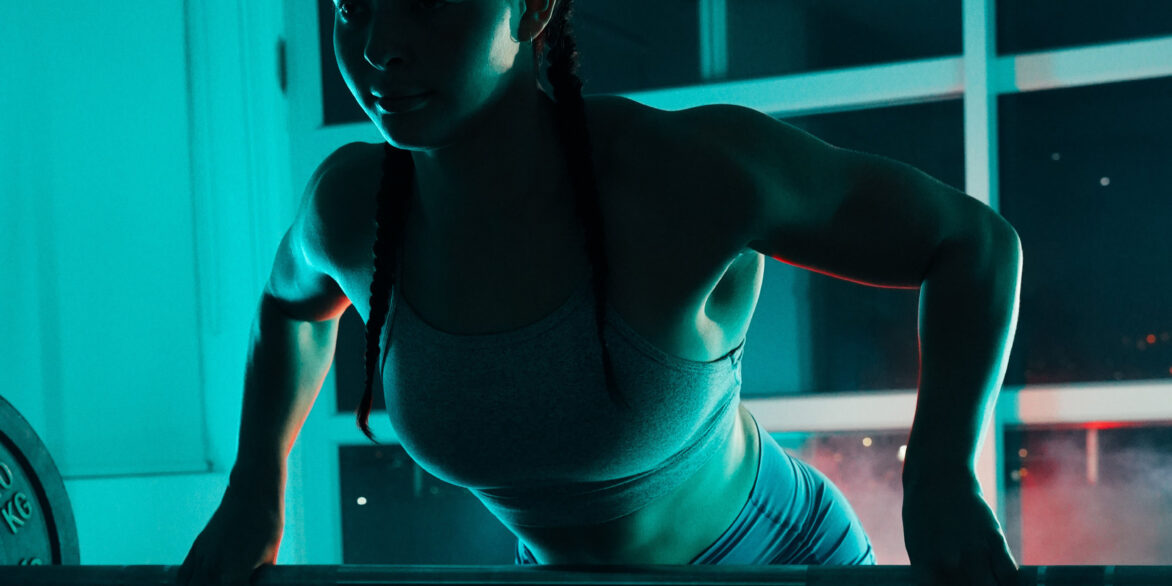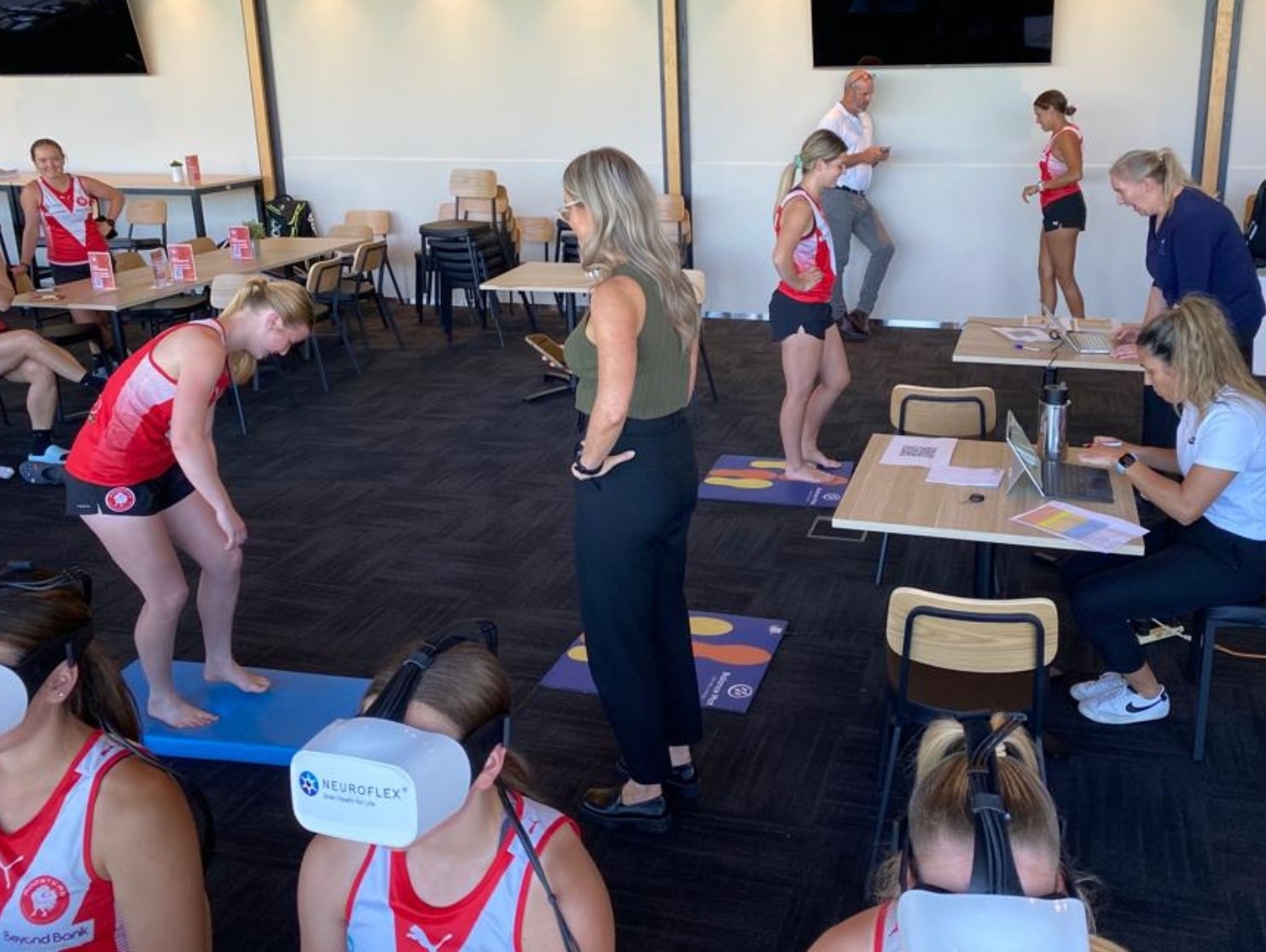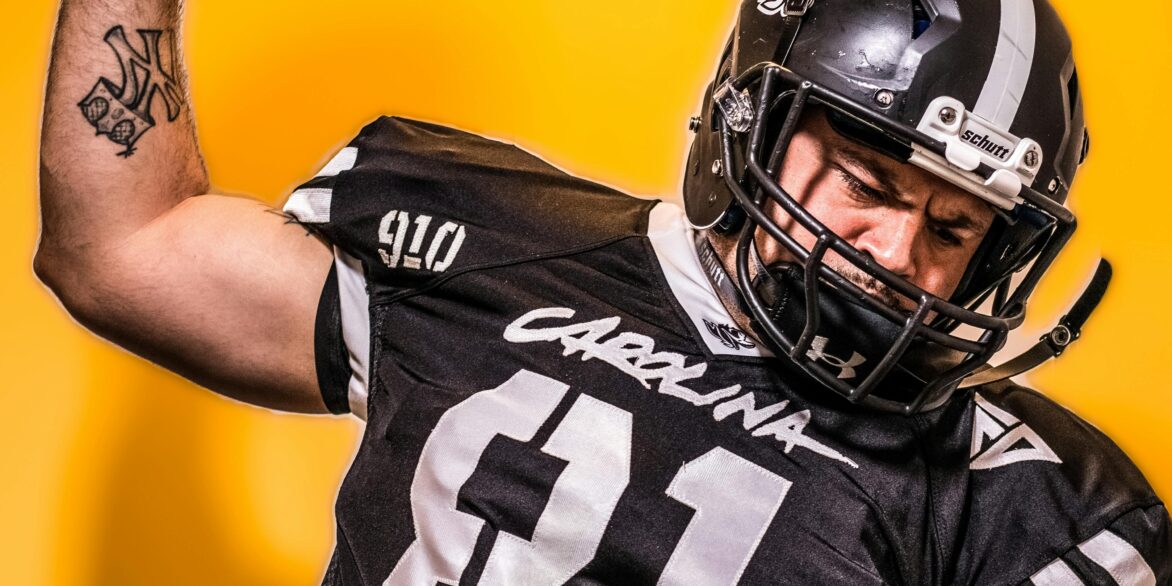So where does Baseline testing fit in?
Within all the domains of assessment mentioned so far, there is enough individual variation to make interpretation of assessment difficult at times, especially as we try and determine the main drivers of persistent symptoms. Establishing a pre-injury baseline of an individual’s symptoms and objective signs relevant to concussion helps provide a reference point to improve interpretation of each test. Baseline testing improves concussion assessments for both categories of assessment.
1. It improves assessments post injury to confirm concussion (38).
2. Improves assessments to help guide treatments.
“A pathway is needed for referrals to appropriate health professionals.”
If baseline testing is to be a viable option in the real world, we feel it needs to meet a number of prerequisites.
· It needs to be multimodal as much as possible.
· Tests need to valid and reliable.
· As a screen, it needs to be quick & efficient. Long detailed assessments become less attractive and cost effective for sporting organisations & schools. Even when we are dealing with brain health! Baseline screens need to be quick! Longer detailed assessments can then be undertaken with a referral on to specialist services to be managed at an individual level.
· It needs to be safe, usable, and acceptable for use within a club/school environment, with equipment that is portable & affordable. Research tests using Transcranial Magnetic Stimulation, Force plates to measure sway in standing balance, and detailed neuropsychology tests are just not suitable as a screen. These tests can be important, don’t get me wrong, but are more suited to detailed assessment following effective referral pathways.
· Any data collected needs to be secure, but accessible to relevant clinicians who can interpret the results appropriately & in the context of the individual. A pathway is needed for referrals to appropriate health professionals. There is no use collecting data that cannot be appropriately assessed in the context of all other tests results. Poor interpretation can lead to missed diagnosis, missed referrals, as well as inappropriate referrals, unnecessary investigations, and over-servicing. All of these lead to less favourable outcomes.
· It needs to be offered to at risk populations. This is the logistical challenge. Concussions occurs frequently in schools, both in the playground and the sporting field. Plenty of sports experience concussions and even sub-concussion head knocks such as rugby, Australian rules football, gridiron football, soccer, cricket, skiing, basketball, gymnastics, lacrosse, race cars, netball…and the list goes on. It is anticipated that baseline screening of brain health will become a standard part of these sports. Baseline musculoskeletal screening to help reduce injury risk is already common practice as well as load management, mouth guard or helmet fittings, sleep, and wellness tracking. Now, finally, brain health can be included as well!
If these prerequisites are met, baseline testing is a feasible and valuable way of improving concussion assessment and management. So why is there still some reluctance?
Previous experience with some baseline testing of only select functions such as some computerised neuro cognitive testing (not multimodal) have proven disappointing – both in terms of feasibility, time, cost in addition to limited clinical evidence (22).
Guidelines have also been historically reluctant to recommend compulsory baselines testing at all levels. There may be a few reasons for this.
· The general public may misinterpret its role and may think post-concussion assessments are not effective without a previous baseline. This may result in people not seeking the appropriate follow-up advice in the event of a concussion. As we have already mentioned, disclosure of symptoms is already a huge problem. People may also think baseline tests will provide objective data that threatens their work or sporting career.
· In addition, health professionals may be concerned about over-testing, and uncovering a complex issue that their health service is unable to deal with adequately. Litigation in concussion, in relation to long term brain health is making many health professionals nervous.
· Depending on the type, baseline testing costs money & time. This raises questions about inequity and health. How many people would miss the most effective concussion assessments? This is why we have made Your Brain Health screens very affordable.
In the search for improved standards, baseline testing is definitely on it’s way into clinical practice, and is being included into guidelines, such the current 2023 Australian Football League Guidelines.
What is the solution? From our vantage point, the solution is already emerging. The requirements are becoming clear. We need to use best evidence to provide multidimensional baseline tests that are efficient, effective, and inexpensive. Use tests that cover domains commonly affected by concussion/TBI. Screen these domains quickly, with enough information to use as a comparison with identical post injury assessments.
“This type of technology allows for screening in clinic or at sporting facilities with detailed measures previously only available at more specialised research facilities.”
Include a history, especially information about previous concussions & migraine, but also learning disorders, neck injuries and mental health. Symptoms reporting remains vitally important and can be screened quickly. Standing balance can be measured quickly and Neuro Cognitive tests or quick tests of reaction time can also be included.
Vestibular ocular motor assessment has emerged as priority measure. The advantage of Vestibular ocular assessment screens is that it quickly assesses multiple different brain networks and has proven to be a sensitive measure (9) with implications for informing some of the best evidence based concussion treatments (36). More recently, even more sensitive virtual reality eye tracking devices such as NeuroFlex® are enabling clinicians to collected detailed objective information about vestibular ocular reflex, smooth pursuit movement in both head free and fixed positions (including vergence), saccadic eye movements, anti-saccades (cognitive test), nystagmus and optokinetic nystagmus all within minutes! This type of technology allows for screening in clinic or at sporting facilities with detailed measures previously only available at more specialised research facilities. Software also allows for direct comparison with baseline tests and can be used to track brain health performance over the long term.
Remember, baseline testing is still just a ‘screen’, and can lead to further detail and gold standard investigations with appropriate referrals e.g., vestibular investigations with Vestibular Physiotherapists or Neurotology, ocular tests with orthoptists and neuro-ophthalmologists, neuro cognitive testing with neuropsychologists, sleep investigations with sleep specialists, cervical investigation with neurosurgery/orthopaedics and physiotherapists.
“This means that baseline testing is more than the sum of its parts.”
Our own practice-based experience has taught us that baseline screening provides additional benefits that are worth considering.
It provides an opportunity for education about concussion to everyone, to create an awareness of signs and symptoms to help recognise concussion and outline the ‘end-to-end’ management of concussion pathway that stems from multimodal concussion assessments. This education is provided at a moment in time when there is less stress, anxiety or urgency that may occur at the time following a concussion.
Tracking brain health over time helps manage many areas beyond the scope of a single concussion. You potentially can start to detect the cumulative effect of multiple concussions. Sleep, mental health, migraines, headaches, neck strength and stability, balance and vision can all benefit from optimal care, and baseline screening has a role in identifying and directing best care for these issues.
We have discovered that baseline testing is an important part of the end-to-end management of concussion. It not only helps confirm a diagnosis concussion, but more importantly helps guide the best available clinical interventions and provides opportunity for education about brain health beyond the scope of just concussion. This means that baseline testing is more than the sum of its parts. Baseline testing has evolved, and the next step is to ensure implementation into practice does not take over 17 years which can often be the case when translating research into practice (39)! Good education is essential for both community and health professionals. Technology is moving fast, with the potential to enhance known the evidence and improve assessments. Technology and innovation in assessments needs to be evaluated and updated with experienced clinicians working at the coalface of concussion care to ensure it meets the pragmatic needs and evidence-based requirements needed to improve outcomes.
“The next step is to build a global community of practice where health professionals can support each other and share information while the evidence and clinical practice rapidly evolves.”
References
1. Kutcher JS, Loosemore M, Makdissi M. What are the critical elements of sideline screening that can be used to establish the diagnosis of concussion? A systematic review. Br J Sports Med [Internet]. 2017; Available from: https://bjsm-bmj-com.ezproxy.flinders.edu.au/content/51/11/888.abstract
2. Leddy J, Makdissi M, Sullivan SJ, Broglio SP. The sport concussion assessment tool 5th edition (SCAT5): background and rationale. Br J Sports [Internet]. 2017; Available from: https://bjsm-bmj-com.ezproxy.flinders.edu.au/content/51/11/848.abstract
3. Alla S, Sullivan SJ, Hale L, McCrory P. Self-report scales/checklists for the measurement of concussion symptoms: a systematic review. Br J Sports Med. 2009 May;43 Suppl 1:i3-12.
4. Bunt SC, LoBue C, Hynan LS, Didehbani N, Stokes M, Miller SM, et al. Early vs. delayed evaluation and persisting concussion symptoms during recovery in adults. Clin Neuropsychol. 2022 Sep 9;1–18.
5. Waltzman D, Daugherty J, Snedaker K, Bouton J, Wang D. Concussion reporting, return to learn, and return to play experiences in a sample of private preparatory high school students. Brain Inj. 2020 Jul 28;34(9):1193–201.
6. Mucha A, Collins MW, Elbin RJ, Furman JM, Troutman-Enseki C, DeWolf RM, et al. A Brief Vestibular/Ocular Motor Screening (VOMS) assessment to evaluate concussions: preliminary findings. Am J Sports Med. 2014 Oct;42(10):2479–86.
7. Anne Mucha D, Collins MW, Elbin R, Furman JM, Kontos AP. A brief Vestibular/Ocular Motor Screening (VOMS) assessment to evaluate concussions. Am J Sports Med. 2014;42(10):2479–86.
8. Kontos AP, Sufrinko A, Elbin RJ, Puskar A, Collins MW. Reliability and Associated Risk Factors for Performance on the Vestibular/Ocular Motor Screening (VOMS) Tool in Healthy Collegiate Athletes. Am J Sports Med. 2016 Jun;44(6):1400–6.
9. Ferris LM, Kontos AP, Eagle SR, Elbin RJ, Clugston JR, Ortega J, et al. Optimizing VOMS for identifying acute concussion in collegiate athletes: Findings from the NCAA-DoD CARE consortium. Vision Res. 2022 Nov;200:108081.
10. Whitney SL, Eagle SR, Marchetti G, Mucha A, Collins MW, Kontos AP, et al. Association of acute vestibular/ocular motor screening scores to prolonged recovery in collegiate athletes following sport-related concussion. Brain Inj. 2020 May 11;34(6):840–5.
11. Hood EA, Klima DW, Chui KK, Avallone NJ. Pre-season concussion assessment utilizing the King-Devick Test. Res Sports Med. 2018 Oct 18;1–6.
12. Marinides Z, Galetta KM, Andrews CN, Wilson JA, Herman DC, Robinson CD, et al. Vision testing is additive to the sideline assessment of sports-related concussion. Neurol Clin Pract. 2015 Feb;5(1):25–34.
13. Modica MJ. Sex-Related Differences in Oculomotor and Cognitive Control in Asymptomatic Varsity Athletes with and without a History of Concussion. 2021; Available from: https://yorkspace.library.yorku.ca/xmlui/handle/10315/38718
14. Treleaven D. Oculomotor and Vestibulo-Ocular Function Post-concussion in Children and Adolescents [Internet]. search.proquest.com; 2020. Available from: https://search.proquest.com/openview/baecb4660d90de75e6c9fa27891154c8/1?pq-origsite=gscholar&cbl=18750&diss=y
15. Guskiewicz KM. Postural stability assessment following concussion: one piece of the puzzle. Clin J Sport Med. 2001 Jul;11(3):182–9.
16. Peterson CL, Ferrara MS, Mrazik M, Piland S, Elliott R. Evaluation of neuropsychological domain scores and postural stability following cerebral concussion in sports. Clin J Sport Med. 2003 Jul;13(4):230–7.
17. DaCosta A, Roccaforte A, Webbe F. Development and Clinical Relevance of a Summary Score for the SCAT-5. Arch Clin Neuropsychol. 2019 Jul 26;34(5):794–794.
18. Buckley TA, Munkasy BA, Clouse BP. Sensitivity and Specificity of the Modified Balance Error Scoring System in Concussed Collegiate Student Athletes. Clin J Sport Med. 2018 Mar;28(2):174–6.
19. Galea OA, Bristow HD, Chisholm SM, Mersch ME, Nullmeyer J, Reid CR, et al. Single and dual tandem gait assessment post concussion: What performance time is clinically relevant across adult ages and what can influence results? Musculoskelet Sci Pract. 2019 Jul;42:166–72.
20. Galea O, O’Leary S, Treleaven J. Cervical musculoskeletal and sensorimotor impairments 4 weeks to 6 months following mild traumatic brain injury: An observational cohort study. Musculoskelet Sci Pract. 2022 Feb;57:102490.
21. Bussey MD, Pinfold J, Romanchuk J, Salmon D. Anticipatory head control mechanisms in response to impact perturbations: An investigation of club rugby players with and without a history of concussion injury. Phys Ther Sport. 2023 Jan;59:7–16.
22. Wilmoth K, Brett BL, Emmert NA, Cook CM, Schaffert J, Caze T 2nd, et al. Psychometric Properties of Computerized Cognitive Tools and Standard Neuropsychological Tests Used to Assess Sport Concussion: A Systematic Review. Neuropsychol Rev [Internet]. 2022 Aug 30; Available from: http://dx.doi.org/10.1007/s11065-022-09553-4
23. Darby DG, Maruff P, Makdissi M. Detecting cognitive impairment after concussion: sensitivity of change from baseline and normative data methods using the CogSport/Axon cognitive test battery. Arch Clin Neuropsychol [Internet]. 2014; Available from: https://academic-oup-com.ezproxy.flinders.edu.au/acn/article-abstract/29/5/432/5114
24. Czerniak LL, Liebel SW, Zhou H, Garcia G-GP, Lavieri MS, McCrea MA, et al. Sensitivity and Specificity of the ImPACT Neurocognitive Test in Collegiate Athletes and US Military Service Academy Cadets with ADHD and/or LD: Findings from the NCAA-DoD CARE Consortium. Sports Med [Internet]. 2022 Oct 14; Available from: http://dx.doi.org/10.1007/s40279-022-01768-y
25. Eckner JT, Kutcher JS, Broglio SP, Richardson JK. Effect of sport-related concussion on clinically measured simple reaction time. Br J Sports Med. 2014 Jan;48(2):112–8.
26. Ledoux A-A, Webster RJ, Clarke AE, Fell DB, Knight BD, Gardner W, et al. Risk of Mental Health Problems in Children and Youths Following Concussion. JAMA Netw Open. 2022 Mar 1;5(3):e221235.
27. Fralick M, Sy E, Hassan A, Burke MJ, Mostofsky E, Karsies T. Association of Concussion With the Risk of Suicide: A Systematic Review and Meta-analysis. JAMA Neurol. 2019 Feb 1;76(2):144–51.
28. Haider MN, Lutnick E, Nazir M, Nowak A, Chizuk H, Miecznikowski J, et al. Sensitivity and Specificity of Exercise Intolerance on Graded Exertion Testing for Diagnosing Sport-related Concussion: A Systematic Review and Exploratory Meta-Analysis. J Neurotrauma [Internet]. 2023 Apr 4; Available from: http://dx.doi.org/10.1089/neu.2022.0331
29. Leddy JJ, Haider MN, Ellis M, Willer BS. Exercise is Medicine for Concussion. Curr Sports Med Rep. 2018 Aug;17(8):262–70.
30. Magliato SN, Wingerson MJ, Seehusen CN, Smulligan KL, Simon SL, Wilson JC, et al. Sleep Problems After Concussion Are Associated With Poor Balance and Persistent Postconcussion Symptoms. J Child Neurol. 2023 Apr 25;08830738231170721.
31. Eierud C, Craddock RC, Fletcher S, Aulakh M, King-Casas B, Kuehl D, et al. Neuroimaging after mild traumatic brain injury: Review and meta-analysis. NeuroImage: Clinical. 2014 Jan 1;4:283–94.
32. Hier DB, Obafemi-Ajayi T, Thimgan MS, Olbricht GR, Azizi S, Allen B, et al. Blood biomarkers for mild traumatic brain injury: a selective review of unresolved issues. Biomark Res. 2021 Sep 16;9(1):70.
33. Mavroudis I, Petridis F, Balmus I-M, Ciobica A, Gorgan DL, Luca AC. Review on the Role of Salivary Biomarkers in the Diagnosis of Mild Traumatic Brain Injury and Post-Concussion Syndrome. Diagnostics. 2023 Apr 7;13(8):1367.
34. Pearce AJ, Tommerdahl M, King DA. Neurophysiological abnormalities in individuals with persistent post-concussion symptoms. Neuroscience. 2019 Jun 1;408:272–81.
35. Hutchison MG, Di Battista AP, Lawrence DW, Pyndiura K, Corallo D, Richards D. Randomized controlled trial of early aerobic exercise following sport-related concussion: Progressive percentage of age-predicted maximal heart rate versus usual care. PLoS One. 2022 Dec 22;17(12):e0276336.
36. Reid SA, Farbenblum J, McLeod S. Do physical interventions improve outcomes following concussion: a systematic review and meta-analysis? Br J Sports Med. 2022 Mar;56(5):292–8.
37. Wiese-Bjornstal DM, White AC, Russell HC, Smith AM. Psychology of Sport Concussions. Kinesiology Review. 2015 May 1;4(2):169–89.
38. Broglio SP, Harezlak J, Katz B, Zhao S, McAllister T, McCrea M, et al. Acute Sport Concussion Assessment Optimization: A Prospective Assessment from the CARE Consortium. Sports Med. 2019 Dec;49(12):1977–87.
39. Morris ZS, Wooding S, Grant J. The answer is 17 years, what is the question: understanding time lags in translational research. J R Soc Med. 2011 Dec;104(12):510–20.







